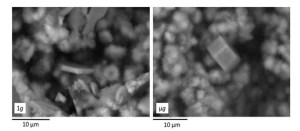The Heliophysics division has released a DRAFT version of a ROSES-18 program element for community review and comment: The draft call for Heliophysics Phase I DRIVE Science Centers. This draft release follows the responses to the previously released Request for Information NNH17ZDA008L. The draft version of B.13 DRIVE Science Center is available as a PDF file from the NSPIRES page for program element B.13 DRIVE Science Centers. After revision, on release, the full text will be available as program element B.13 of ROSES-2018.
DRIVE Science Centers (DSCs), implemented as a NASA-NSF partnership, are part of an integrated multi-agency initiative, DRIVE (Diversity, Realize, Integrate, Venture, Educate), put forward as a high priority recommendation of the 2013 Solar and Space Physics Decadal Survey. DSCs, are focused on grand challenge goals that are both ambitious and focused enough to be achievable within the lifetime of the center. In other words, they should address problems poised for major advances. This program is intended to support science that cannot be effectively done by individual investigators or small teams, but requires the synergistic, coordinated efforts of a research center. In order to maximize the potential for these science centers to deliver on innovative and breakthrough science, they are expected to include aspects in their design that support collaboration and deep knowledge integration across the full range of expertise (scientific, computational, educational) within them, as recommended in a recent report by the National Academy of Sciences, Enhancing the Effectiveness of Team Science.
As described in the Decadal Survey, the emerging view of the interactions within and between elements in the solar and space physics domains (Sun, Heliosphere, Geospace, the Earth’s upper atmosphere, and other planetary space environments) is that of a complex and nonlinear pattern of multiple causes feeding into large-scale responses. Some of the most challenging problems are centered on aspects of these interconnections. Progress requires "a deep understanding of multiply connected physical systems" motivating "a sea change in the way breakthrough science is done. Under the auspices of the DRIVE initiative, the Decadal Survey recommended, "NASA and NSF together should create science centers to tackle the key science problems of solar and space physics that require multidisciplinary teams of theorists, observers, modelers, and computer scientists".
Comments on the draft text should be addressed by email to janet.kozyra@nasa.gov and jim.spann@nasa.gov by September 21, 2018. Comments and/or questions may result in changes to the text and/or an entry in a FAQ or questions and answer document. Either way, the anonymity of persons/institutions who submit questions will be preserved.


































